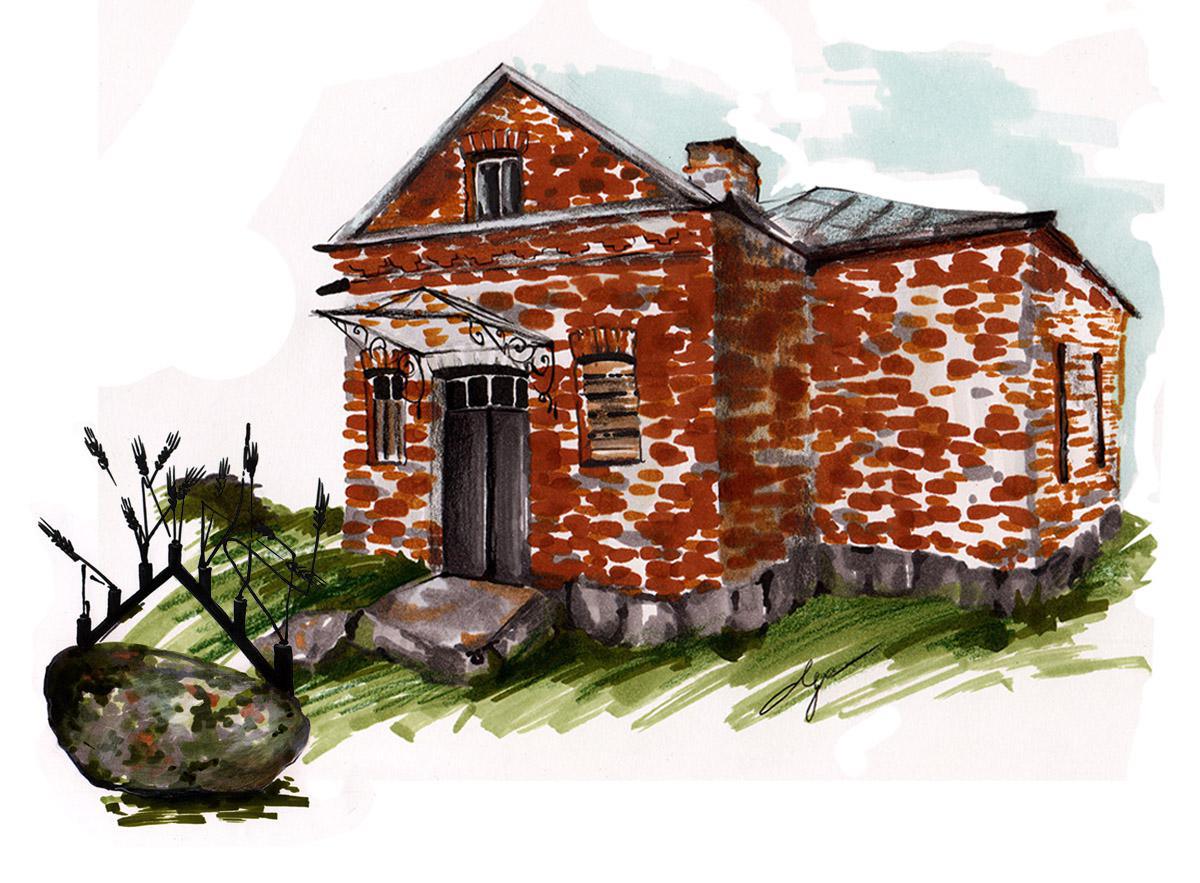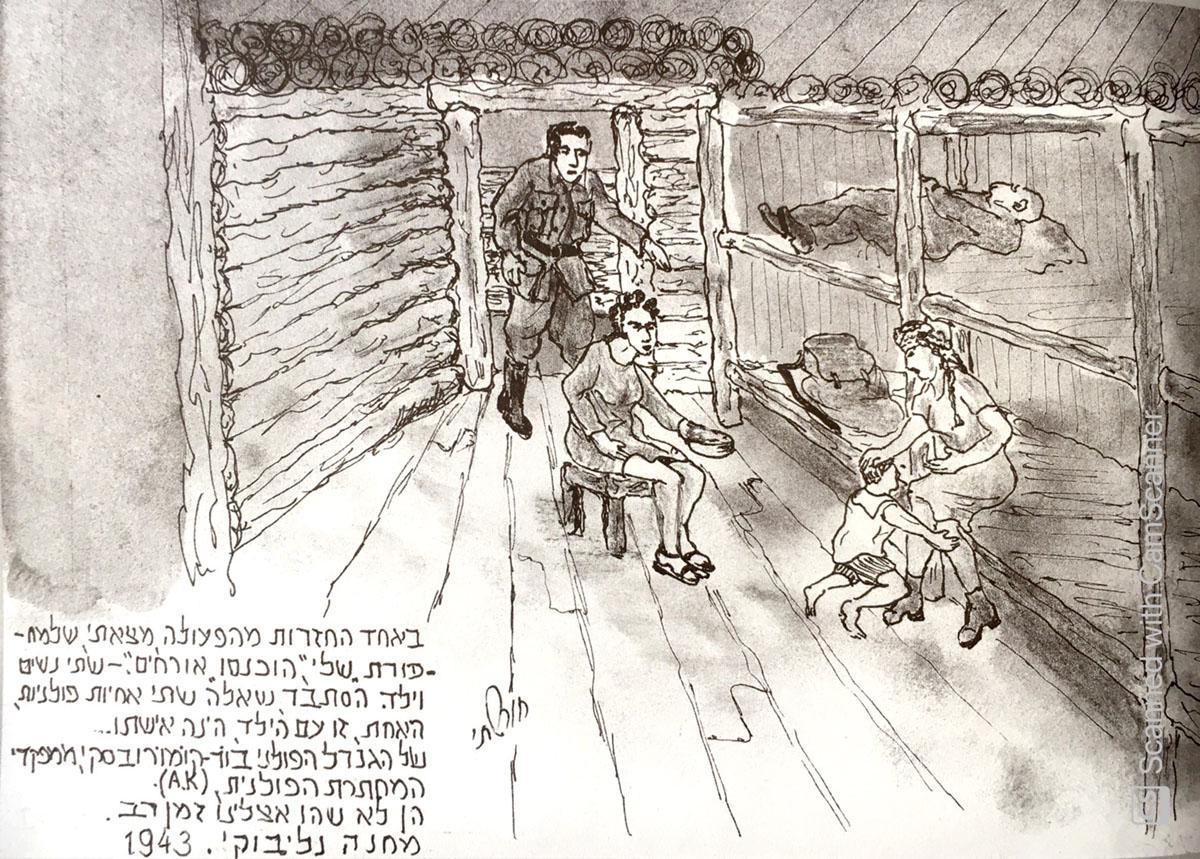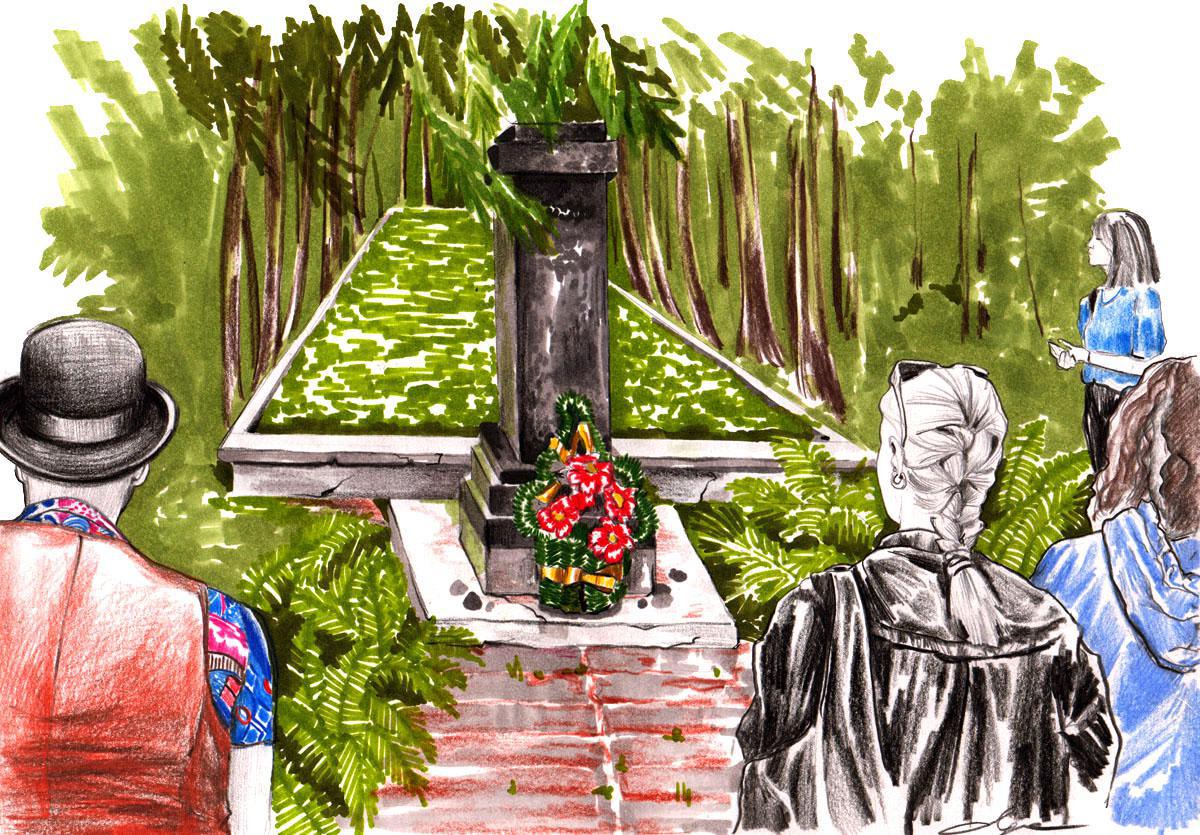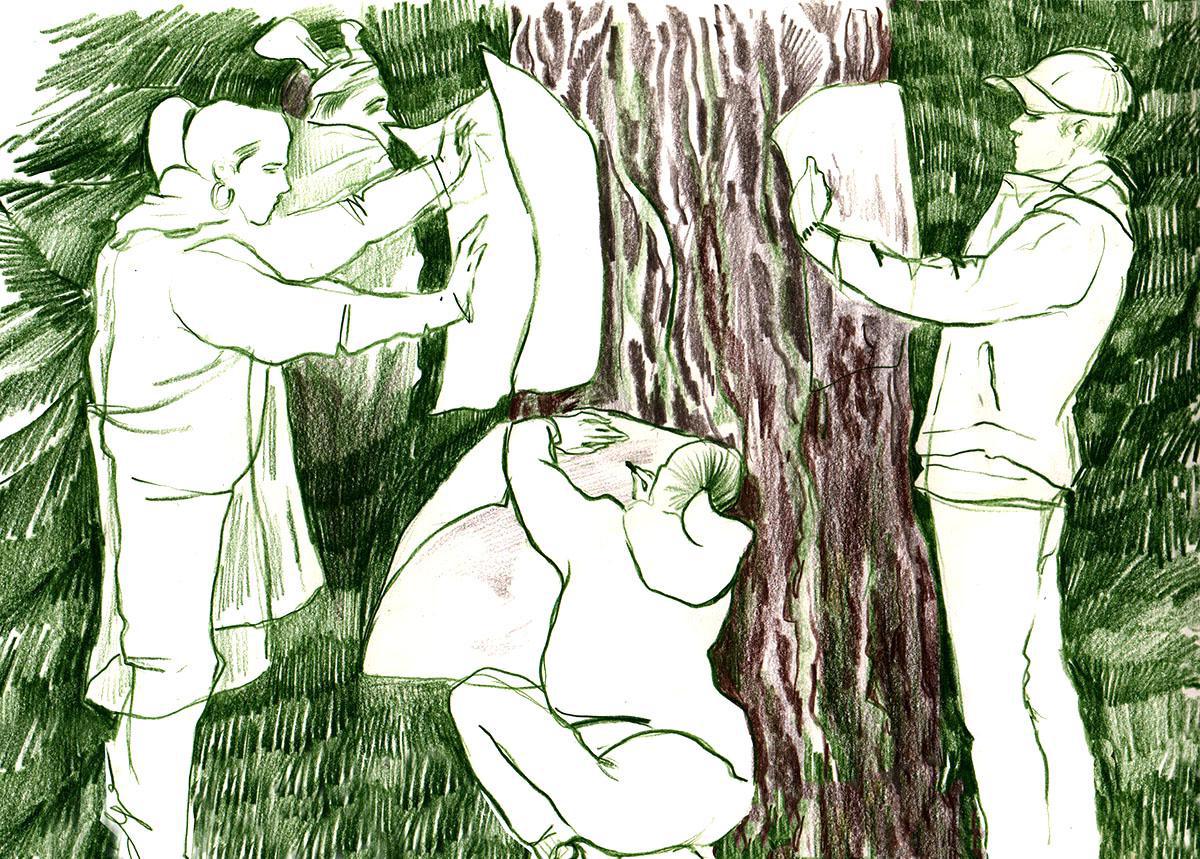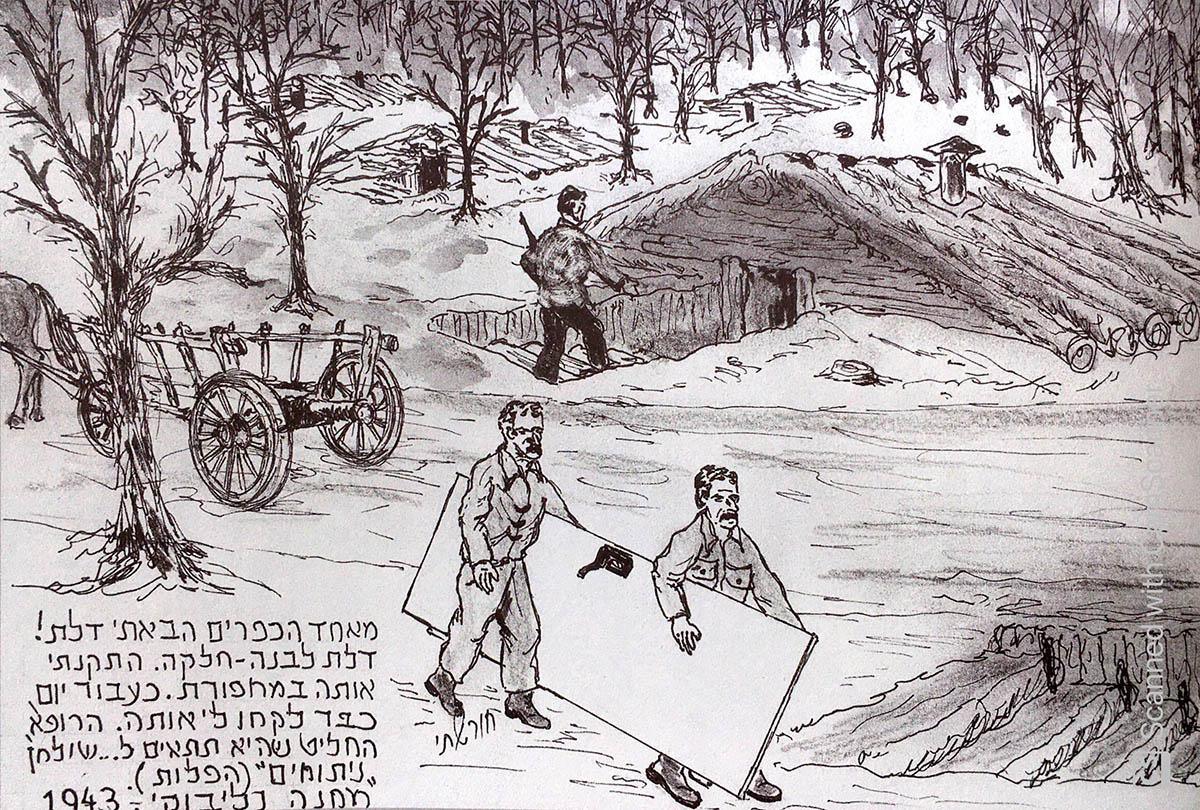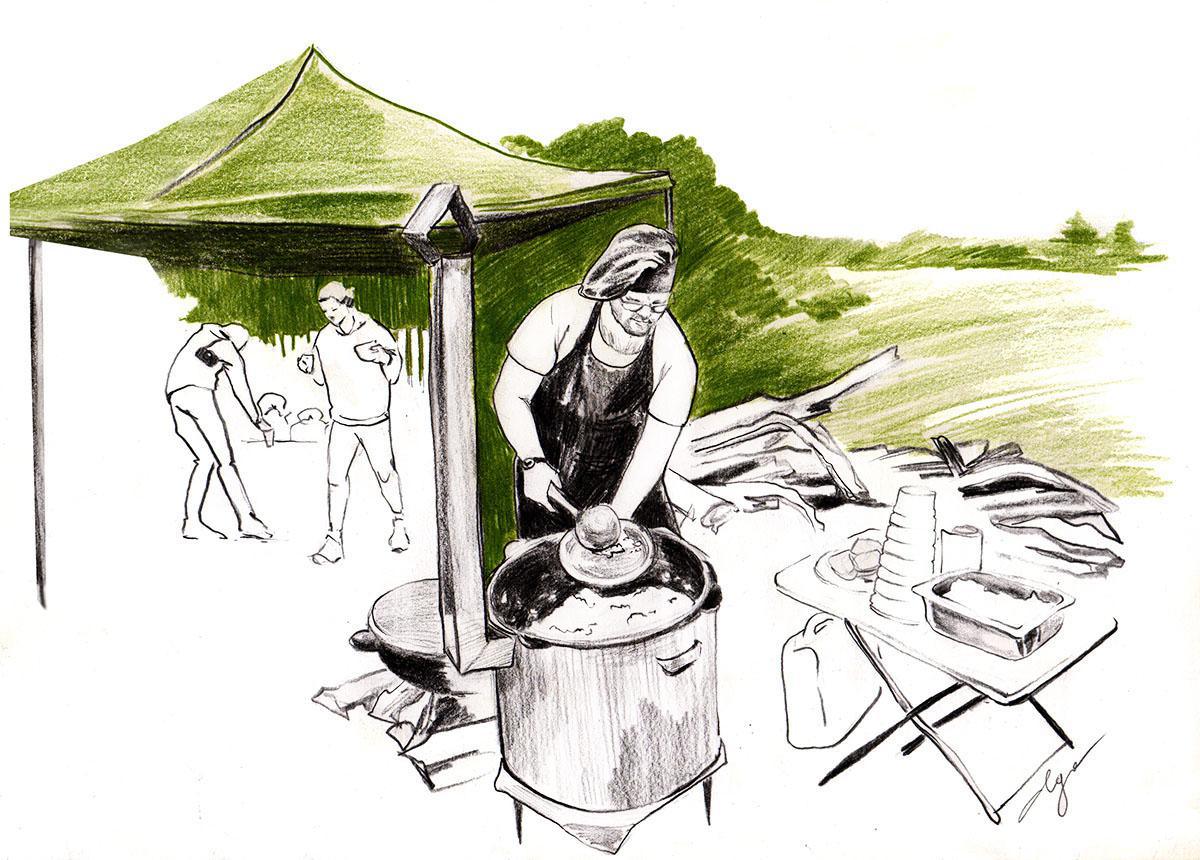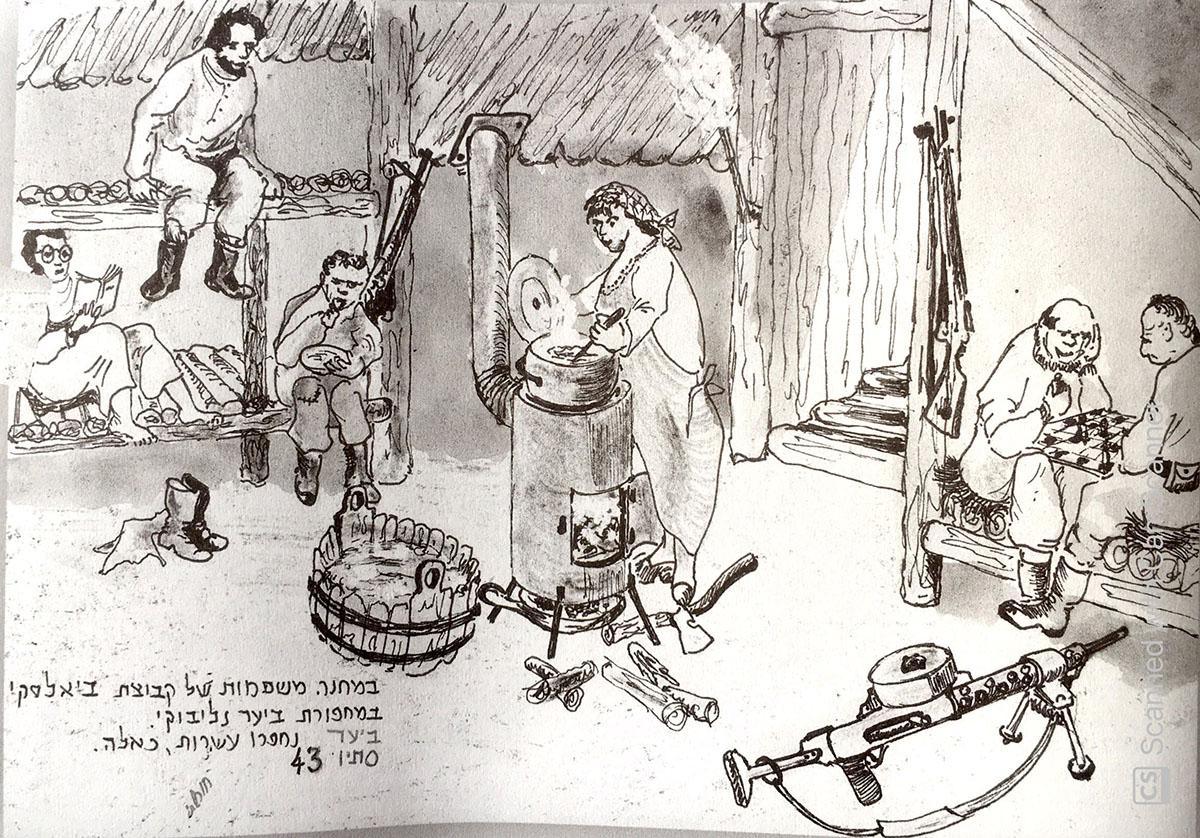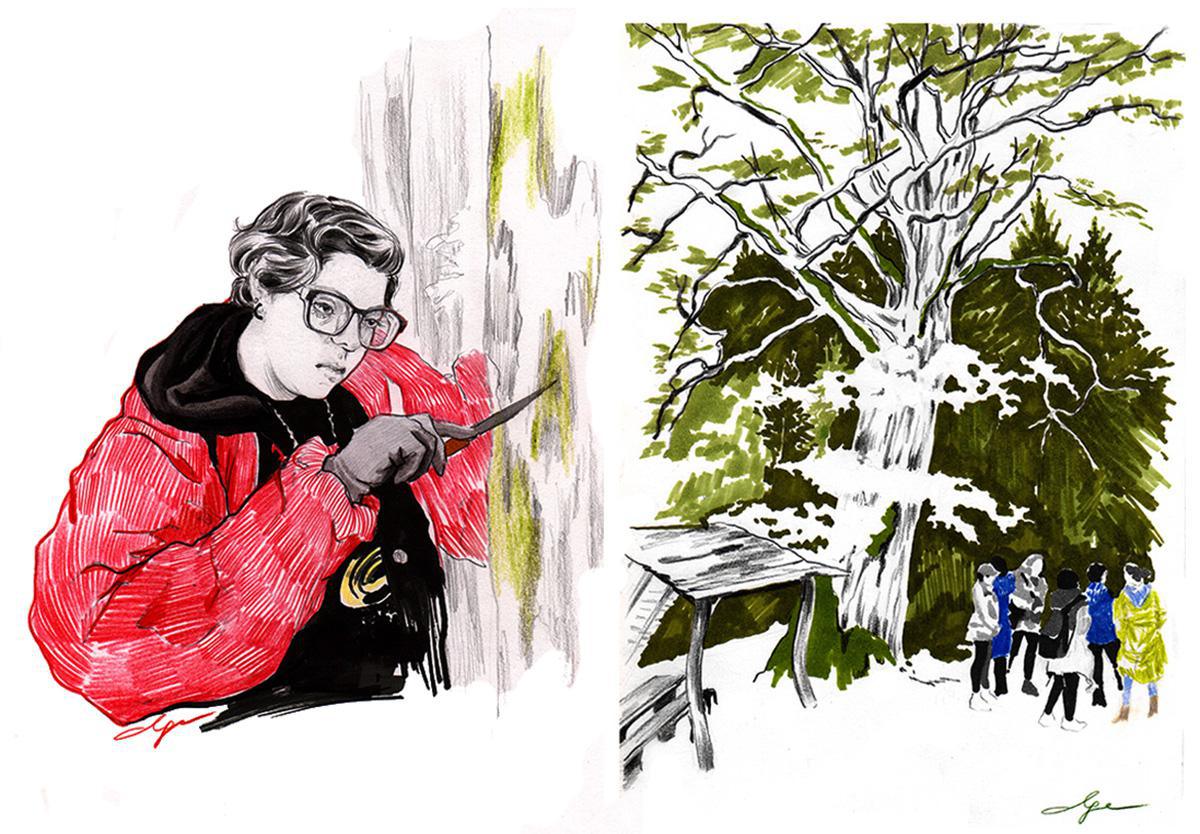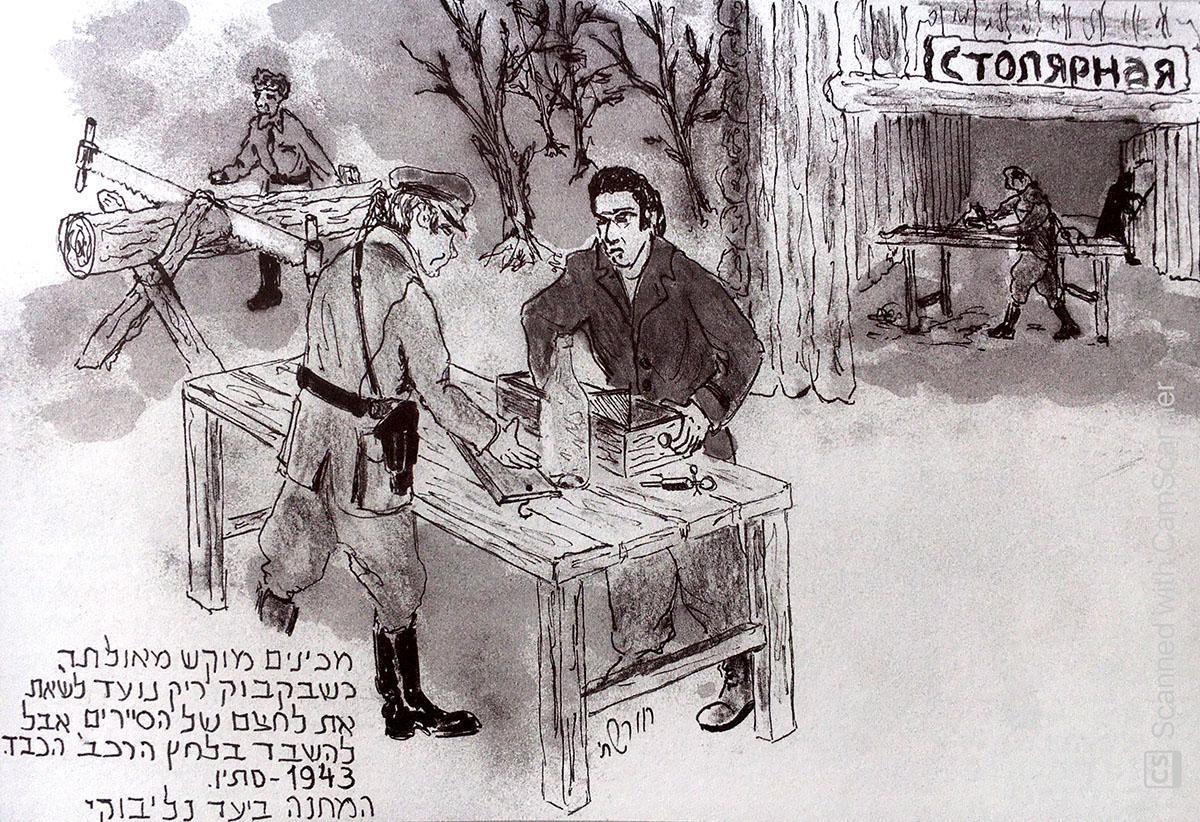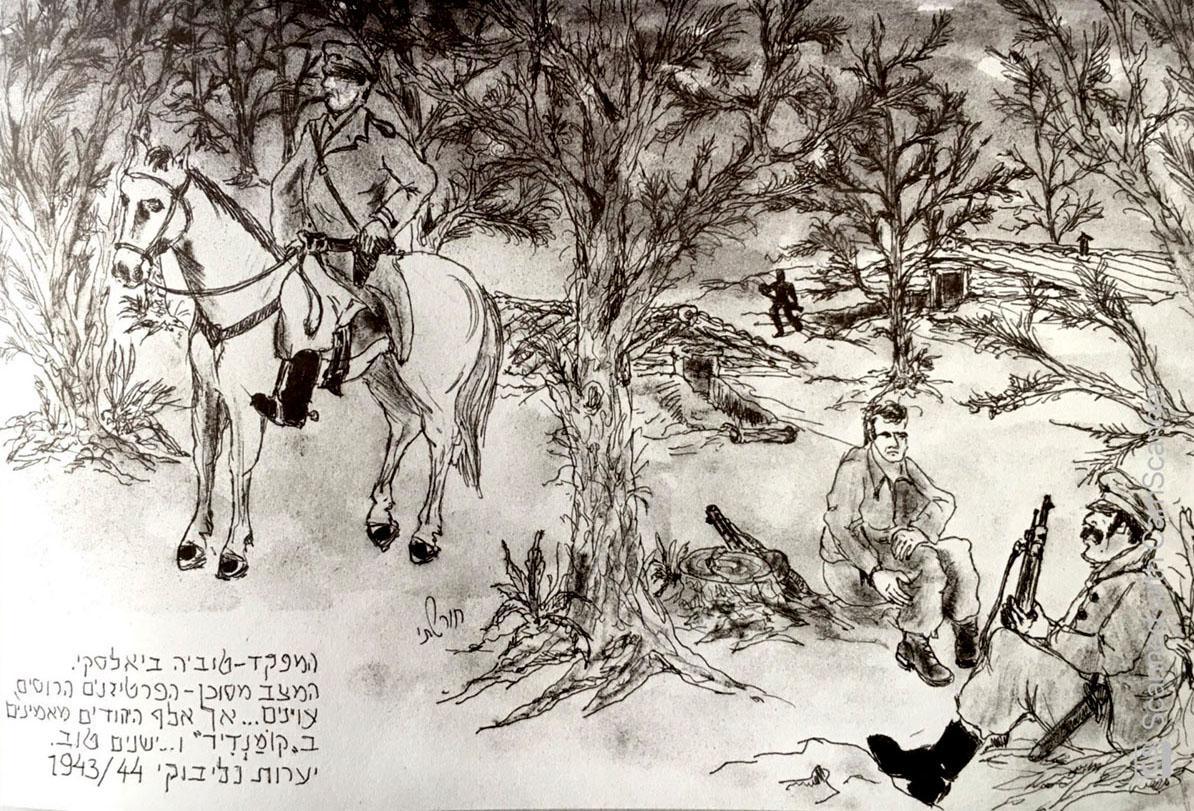Olga Balai, an artist from Minsk, participated in the art workshop within the Living Memorial project sketching the participants and experts in the process of researching and generating the ideas.
Whilst preparing for the workshop in the forest Olga came across a sketchbook by Pavel Sheinvald (Perez Shorshaty), a Bielski partisan. The drawings were made after the war based on his memories of life in the Naliboki Pushcha in 1943-44. Her sketch of the 150 year old oak tree at the entrance to the Bielski camp, which she sent to the Berlin partner group, was integrated by Matthew Menneke in his artwork about the Wannsee Conference.
Those sketches and witty captions gave insight into the routine of the Jewish family detachment and often came to mind when exploring the site of the camp in the Naliboki forest. There came an idea to sketch the participants of the workshop in the same surroundings, but 77 years later.
The partisan vibe of the site is still alive and can be seen in both the modern (colored) and the old drawings (black & white ).
Follow Olga Balai on :
Instagram: @olga_balai_art
Facebook: Olga Balai
Behance: Olga Balai
Participants watching presentations at the beginning of the workshop.
Tamara Vershitskaya giving a lecture about life in the Novogrudok ghetto and in the partisans. Roman Kroke searching for metaphors.
Station of the guards in the ghetto and the metaphoric symbol of the Jewish Resistance Museum in Novogrudok.
Roman Kroke presenting the concept of a tree as a metaphor for the Bielski partisan camp.
Appellplatz – a place of a daily roll-call of the ghetto prisoners and the barracks. (The Jewish Resistance Museum in Novogrudok.)
A room in the ghetto barracks. Sleeping banks had a space of 65 cm per person. A prisoner received a daily ration of 125 gr of bread / Roman Kroke holding a war-time suitcase which belonged to the Jews with artifacts from the Bielski camp to be presented at the workshop.
Partisan Pavel Sheinvald found two Polish sisters and a child in his dug-out. The one with a child was the wife of Bor-Komarowski, a Polish general, one of the commanders of the Polish resistance (Armia Krajowa - AK).
Participants visiting a place of massacre in Skrydlevo . 5,100 Jews of Novogrudok were killed and buried in the mass grave. It was the first and the biggest massacre which took place on December 8, 1941.
Participants working with ideas and metaphors for the Living Memorial in the old wooden house in the Naliboki forest.
Laying an explosive on the railway. One had to lay an explosive next to the protective position in order to mislead reconnaissance which checked the railway before the train passed.
Participant Larisa in search for ideas for the installation in the Naliboki forest.
Dug-outs in the permanent camp of the Bielski group in the big Naliboki forest. About a thousand Jews lived there.
Participants working with imprints of Tuvia’s oak tree bark at the entrance to the Bielski camp.
Partisan Pavel Sheinvald brought a white and smooth door and installed it in the dug-out. A day later the doctor decided that it would make an excellent operations / abortions table. Naliboki camp, 1943
Cook Ivan preparing a ‘partisan’ meal for the group in Kletishche / Naliboki Forest.
In a dug-out in the Bielski family camp. Dozens like this one were dug in the forest. Naliboki camp, autumn 1943.
Participant Fahranda working on her installation in the Bielski camp. / The group gathering near the 150-year old Tuvia’s oak tree at the entrance to the Bielski camp.
Preparing an improvised mine. An empty bottle was aimed to stand the pressure of reconnaissance but to break down under the pressure of a heavy vehicle. The Naliboki forest camp. Autumn, 1943.
The group resting in the Bielski camp like partisans did.
Tuvia Bielski, the commander. The situation was dangerous. The Russian partisans were hostile. But a thousand Jews believed in “the comandir” and slept well. Naliboki forest, 1943-44.




